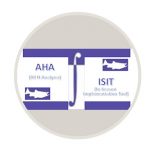HSRG Tools
The Hatchery Scientific Review Group (HSRG) has developed analytical tools to support application of its principles and recommendations, including a scientific framework for artificial propagation of salmon and steelhead, benefit/risk assessments tools, hatchery operations guidelines, and monitoring and evaluation criteria.
Initially, the primary analytical tool was the “All H Analyzer” (AHA), a Microsoft Excel-based application that allows managers to explore the implications of alternative ways of balancing management of hatcheries, harvest, and habitat and hydrosystem constraints.
More recently, the AHA tool has been updated and enhanced with additional features. The In-Season Implementation Tool (ISIT) is designed to help managers make annual decisions about hatchery and harvest management. For example, annual decisions may be made about the number, size, and age of hatchery releases, the percentage of natural-origin broodstock, weir management policies, and harvest policies. The ISIT is both a database and a calculator. It is designed to document the population’s history and current status and provide guidance on annual management decisions.
Analytical Tools: ISIT and Components
The HSRG has used these tools to review and provide recommendations on state, tribal, and federal hatchery programs in the Puget Sound, Coastal Washington, and the Columbia River Basin. The HSRG recommends continued application of its implementation framework, including the scientific principles, standards and methods, and these assessment tools. These tools allow consultations on hatchery management to be quantitatively integrated into an “All H” or ecosystem-based management context along with an evaluation of the effects of hydropower, harvest, and habitat on populations.
Status and Trends data
Status and Trends data include natural spawning escapement estimates, hatchery broodstock and release numbers, and harvest data. These data should be updated in ISIT on an annual basis.
Key Assumptions about the 4 H’s
Key Assumptions about habitat (productivity and capacity), fish passage (adult and juvenile passage survival), in-hatchery survival and fecundity, and smolt-to-adult returns are also documented in the ISIT. These assumptions are updated when new data are available.
Decision Rules
Decision Rules provide guidance to managers on hatchery and harvest management based on the adult run size forecast.
Annual Management Targets
Annual Management Targets for natural escapement, harvest, and hatchery production based on the adult run forecast are calculated using the Decision Rules.
Population-Specific ISIT
ISITs were developed for Okanogan River summer/fall Chinook; 11 Cowlitz Basin Chinook, coho, and steelhead populations; and 18 Willapa Bay salmon populations (Chinook, coho, and chum).
Generalized AHA-ISIT tool
A generalized version of the AHA-ISIT, developed in 2017 for the Washington Department of Fish and Wildlife, may be adapted to any population.
For more information on this tool, access the documents below from the HSRG Reports and Documents webpage:
- Developing Recovery Objectives and Phase Triggers for Salmonid Populations
- Implementation of Hatchery Reform in the Context of Recovery Planning Using the AHA/ISIT Tool
For assistance with the ISIT tool developed by WDFW and downloadable from this webpage, please contact:
Download the AHA-ISIT Tool Files:
| File | Description | File Date |
|---|---|---|
| All-H Analyzer Guide and Documentation | This All-H Analyzer user guide is an update and expansion of the original user guide developed by the HSRG as part of the Columbia Basin review (HSRG 2009, Appendix D). The All-H Analyzer (AHA) tool is a Microsoft Excel-based application that may be used to evaluate management options in the context of the four “Hs”—Habitat, Hydrosystem, Harvest, and Hatcheries. AHA was developed by the Hatchery Scientific Review Group (HSRG) to support its comprehensive review of more than 300 salmon and steelhead populations in the Columbia Basin (HSRG 2009). | 2020 |
| All H Analyzer for Yakima Coho Population | This is the Microsoft Excel All H Analyzer tool developed for the Yakima coho population. It was developed by the HSRG to help evaluate management options in the context of the four “Hs”—Habitat, Hydrosystem, Harvest, and Hatcheries. | 2020 |
| AHA Naselle Chinook (2020) | This is the Microsoft Excel All H Analyzer tool developed for the Naselle chinook population. It was developed by the HSRG to help evaluate management options in the context of the four “Hs”—Habitat, Hydrosystem, Harvest, and Hatcheries. | 2020 |


